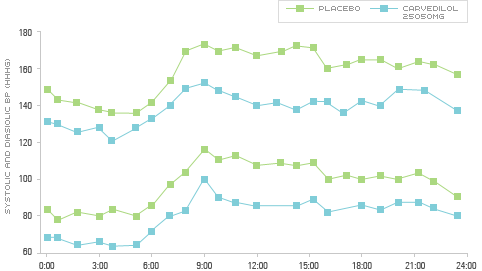Diagnosis of oscillating blood pressure does not exists in the standard classification of blood pressure levels. 120/80 is considered a normal blood pressure but must take into account the age and clinical condition of the patient. It is important to note that blood pressure oscillations can occur depending on where the measurements are carried out.
For example, in private practice, a patient may have high blood pressure, but a measurement made in usual environmental conditions the patient may show normal values. This situation is known as “white coat hypertension.” But neither the pressure fluctuation is not negligible. And such cases are at risk of developing hypertension over time.
The first number in blood pressure measurement, always higher, represents the maximum level and shows the heart condition and the second digit, lower, minimum, represents the diastolic blood pressure relevant for peripheral arteries. They speak only when the oscillating pressure difference between measurements is over cm.Hg 5-6 (of mercury).
Signs Of Disease Are Difficult To Identify:
Oscillating pressure is quite dangerous because of its often not clearly symptoms. If there are faint signs: headache, dizziness, vision and hearing, nasal bleeding, feeling of chest pressure. They become apparent when hypertension has already been installed. Even then, they are often ignored or treated symptomatically, without investigating the real cause. Because it is asymptomatic, hypertension has been called the silent killer, because it’s not discovered until the installation of complications.
Learn To Keep It Under Control:
Even if the blood pressure does not affect oscillatory patient’s lifestyle, hypertension should be controlled and prevented snagging. A patient suffering from such condition should not give up medical surveillance. The doctor is one who has to identify risk factors, to measure the blood pressure more frequently and keep under observation. Furthermore, there are a few recommended lifestyle changes:
reduce salt consumption, increasing exercise, weight loss program if the patient is obese or overweight, stopping smoking, alcohol suppression.
All these factors can contribute to cure high blood pressure and hypertension. If they are correct, however, blood pressure can return to the normal parameters. The patient with fluctuating pressure can be further investigated by recording ambulatory blood pressure. It uses a device that measures pressure regularly (it can be 15, 30 or 60 minutes), both in daytime and at night. With this record, is issued a medical report which analyzes episodes of hypertension that the patient had, and the conditions in which they appeared.
Nutrition Is Important:
In the case of labile blood pressure, is essential to avoid a fat diet (cholesterol cause atherosclerosis, which decreases the quality of the arterial wall, reducing its elasticity), pork, fried foods, coffee, alcohol, cigarettes, salt (which retains water in the body and increases blood volume), canned. Tension begins to rise after 15 min. from drinking coffee, and after 1h further increases. Alcohol is not only to increase tension, but does produce tension.
There is a natural system in which the predominant hypotensive approach foods: garlic, onions, leeks, lettuce, asparagus, nettle, horseradish, lovage, beets, green beans and grains, potatoes, more fish, graham bread and rare poultry, pigeons. Is better to consume predilection wheat, soybeans and especially rye, sprouted. It is recommended to avoid excessive physical exertion, nervous tension, obesity. Daily walks are needed, and even medical gymnastics. A simple run is to increase tension, but the effort extended the lead to lower systolic blood pressure. Speaking and reading lead to increased tension.
Keep Tension Under Control!
Blood pressure should be measured by us whenever we have the opportunity, or by the family doctor. Usual tensiometers, although less reliable than those used by doctors, are helpful in diagnosing hypertension. Measuring blood pressure is a basic gesture that we can do for our health. The best time of day for a measurement is in the morning. The transition from sleep to active hypertensive body is perceived as an effort, thus increasing tension in the morning and is easier to diagnose hypertension. This explains why heart attacks and strokes are more common in the morning.
To determine with a greater precision the diagnosis of hypertension, the patient must measure their blood for 6 weeks in different places and times of day. He must note down every once in a notebook the found pressure, time and place where it was. After 6 weeks, the doctor can analyze data and make a diagnosis.

